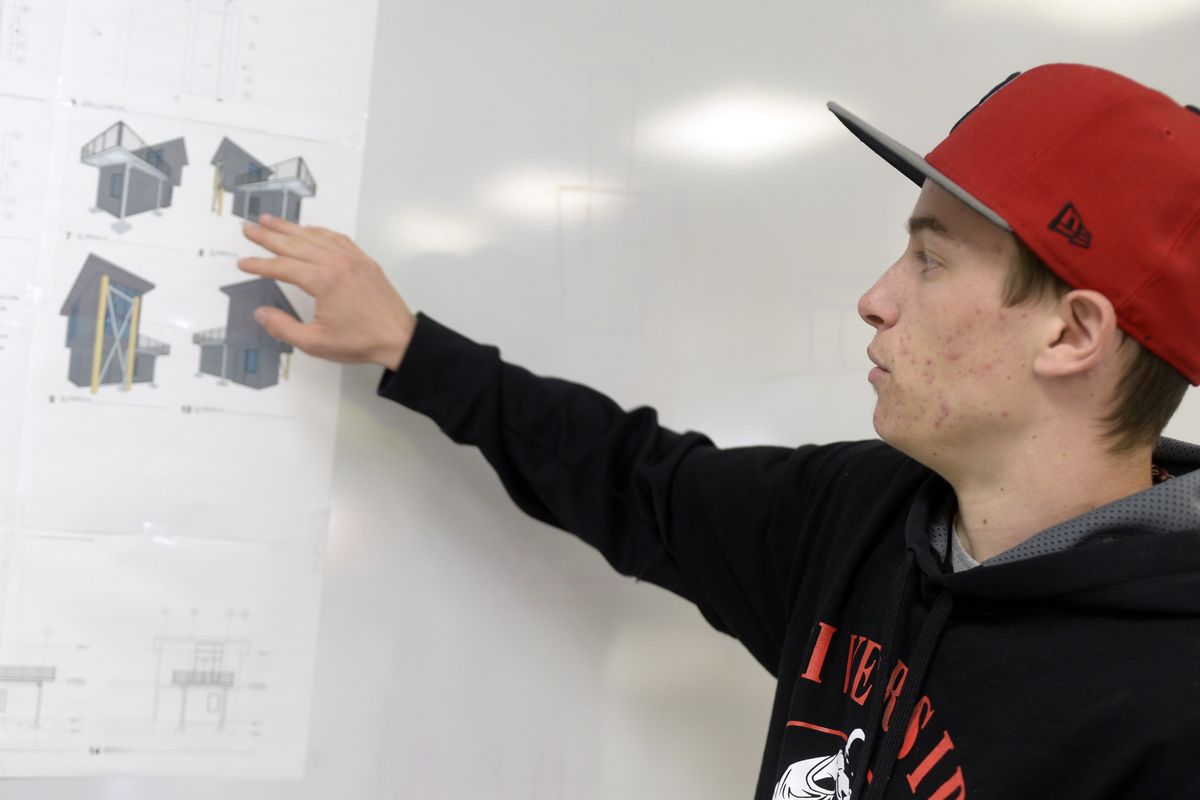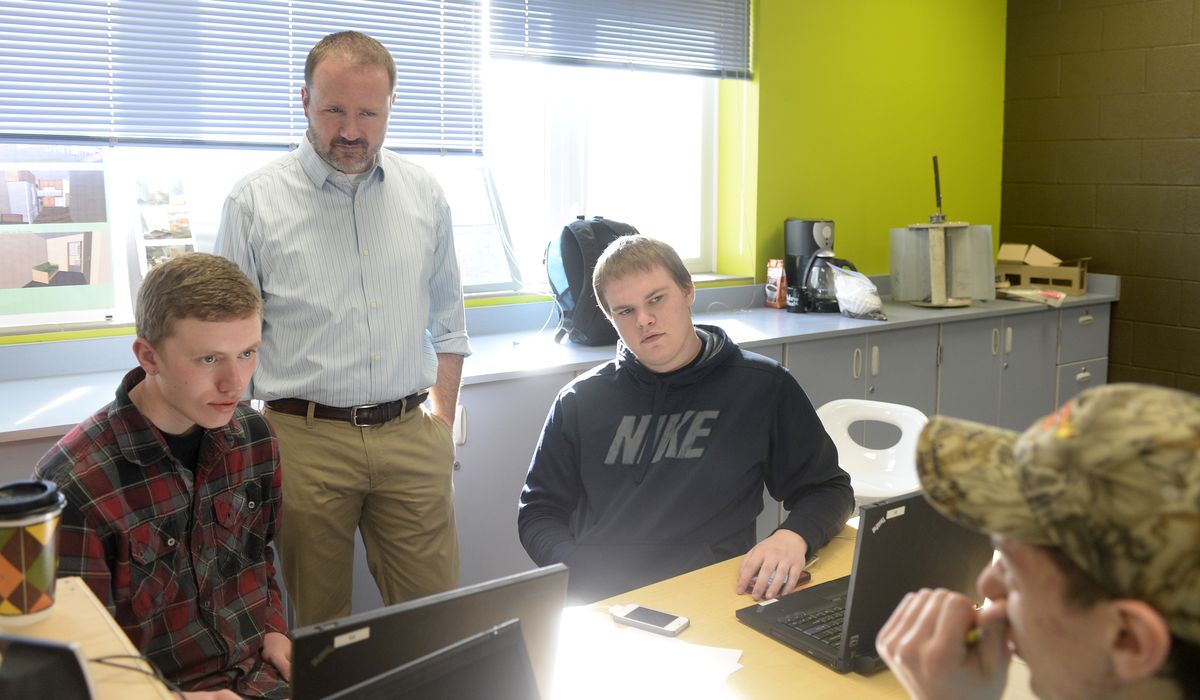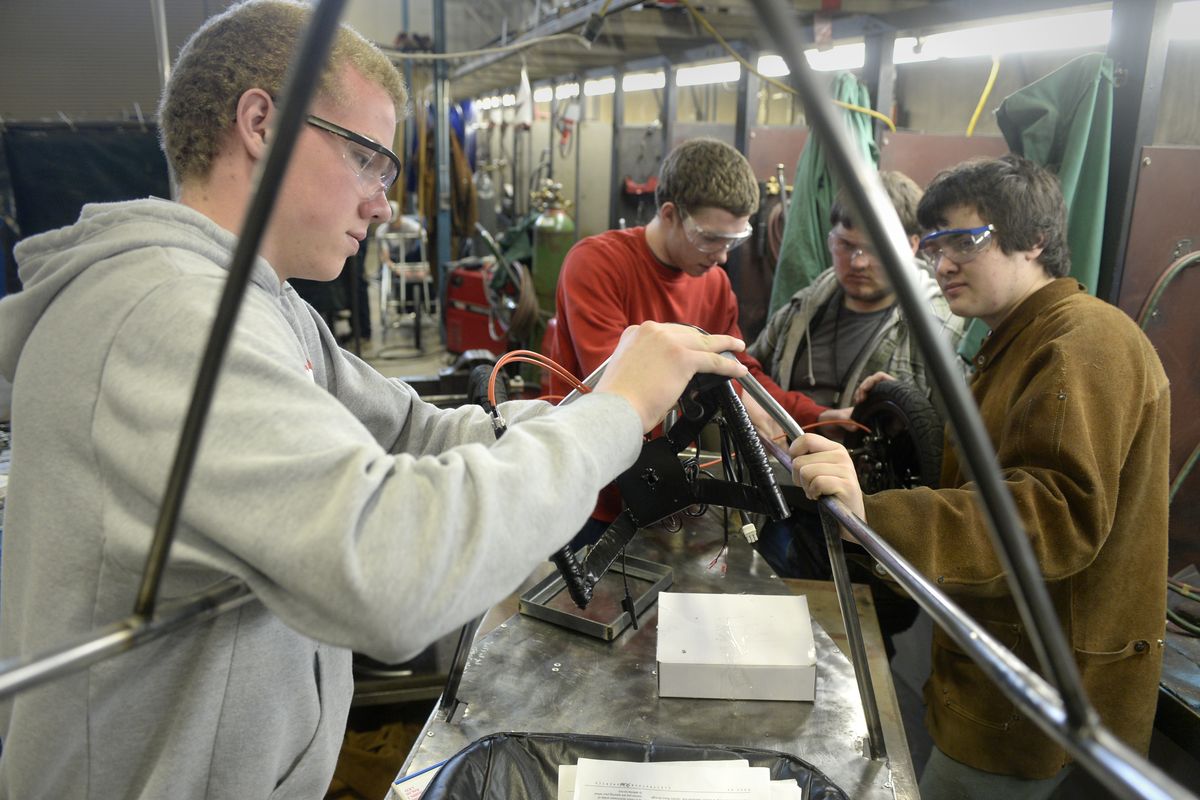Students getting practical education in engineering, construction and design
Students are getting a practical education in engineering, construction and design at Riverside Technical Academy
Kevin Huggins, left, installs controls and battery monitoring equipment with his teammates Joshua Rux, Nate Watson and A.J. Wood in the shop on Monday at Riverside High School. The students in the Riverside Technical Academy program are building a high tech house, while these students are building a fleet of electric vehicles to compete in Electrathon events. (Jesse Tinsley)Buy a print of this photo
It’s not unusual to see students hunkered down among computers, cardboard models and huge blueprints in a classroom.
But the projects this group at Riverside High School is working on don’t appear on most high school schedules: The students are building an eco-friendly house and six electric cars.
The class at Riverside Technical Academy, an alternative program at Riverside High School, is getting a yearlong course in engineering, construction and design.
“It’s pretty cool and it helps you prepare for life after high school,” said Rhett Hardan, 17, and one of the 30 students on the house-building team.
The students first came up with eight different house designs. Initially, the house was supposed to be on a trailer – for ease of relocation – but then the project grew.
“We are going for gold,” said Dallas Shuler, 18. “It’s a house one person could actually live in.”
The final house will have two levels and a balcony and be about 400 square feet.
It’s built of structural insulated panels – or SIP – which are two pieces of plywood sandwiching a layer of foam insulation a couple of inches thick.
“You design them and have them cut to measure and then putting together the house is like making a big puzzle,” Shuler said. Construction will begin in late April.
Students were divided into teams focused on different parts of the house project. Some did interior design, some did landscaping and some made plans for the electrical installations.
The students then presented their projects to NAC Architecture, which helped them select the design that was most attainable.
They will be building the house on a corner of Riverside High School’s property, and jokingly said that’s where they’d hold the senior all-nighter.
“I guess I was most surprised at learning how many different things are involved in building a house,” Shuler said. “You don’t really think about that.”
Another group of students is working in the metal shop, busily finishing six electric vehicles so they can take them to the Electrathon races in Pasco on April 26.
The vehicles are built much like go-carts and powered by two standard car batteries. The six vehicles are all different, as students are experimenting with different designs.
Electrathon is a national race league for battery-powered vehicles. Vehicles carry one person and are covered with a fiberglass shell to reduce drag. Students must adhere to very specific construction standards if they want their vehicle to compete.
“Especially getting the front end and the steering right has been a challenge,” said Brad Adams, one of the teachers with the year-old program. “We are one of the smaller schools going to the Electrathon so I’m proud that we can bring six vehicles.”
The projects were funded by $85,000 in grants from the Hagan Foundation, and from the Office of the Superintendent of Public Instruction as well as a federal Perkins Grant intended for technical education.
Once the students have finished building the house it will be auctioned and any proceeds will go back into the program.
“It’s technically a modular home,” Hardan said. “We can move it to wherever the buyer wants it.”
What are they hoping to get for it?
Hardan and Shuler exchange glances and laugh.
“As much as possible,” Hardan said. “We will take cash.”


